Embedded Programing
This week, I worked on key tasks for embedded programing, simulation and group work where we focussed on computer archtectureand reading datasheets of some micro controllers
ESP8266EX
I went through different datasheets trying to discover the best to use in my project and I read more about ESP8266EX in IoT projects and I found that it’s reliable, efficient, and powerful. It has fast Wi-Fi and a 32-bit processor with built-in memory, which keeps everything running smoothly.
I also appreciate how versatile it is with different connection options like GPIO, UART, SPI, and more, making it easy to connect sensors and other devices. One of the best things about it is its power management—it can go into deep-sleep mode and use very little power, which is perfect for battery-operated projects.
It’s also compact and cost-effective, which makes my designs simpler and more efficient. Whether I’m working on smart home gadgets or industrial controllers, the ESP8266EX gives me the performance and flexibility I need compared to other microcontrollers.
here is the link which I use to read more about ESP8266EX https://www.espressif.com/sites/default/files/documentation/0a-esp8266ex_datasheet_en.pdf
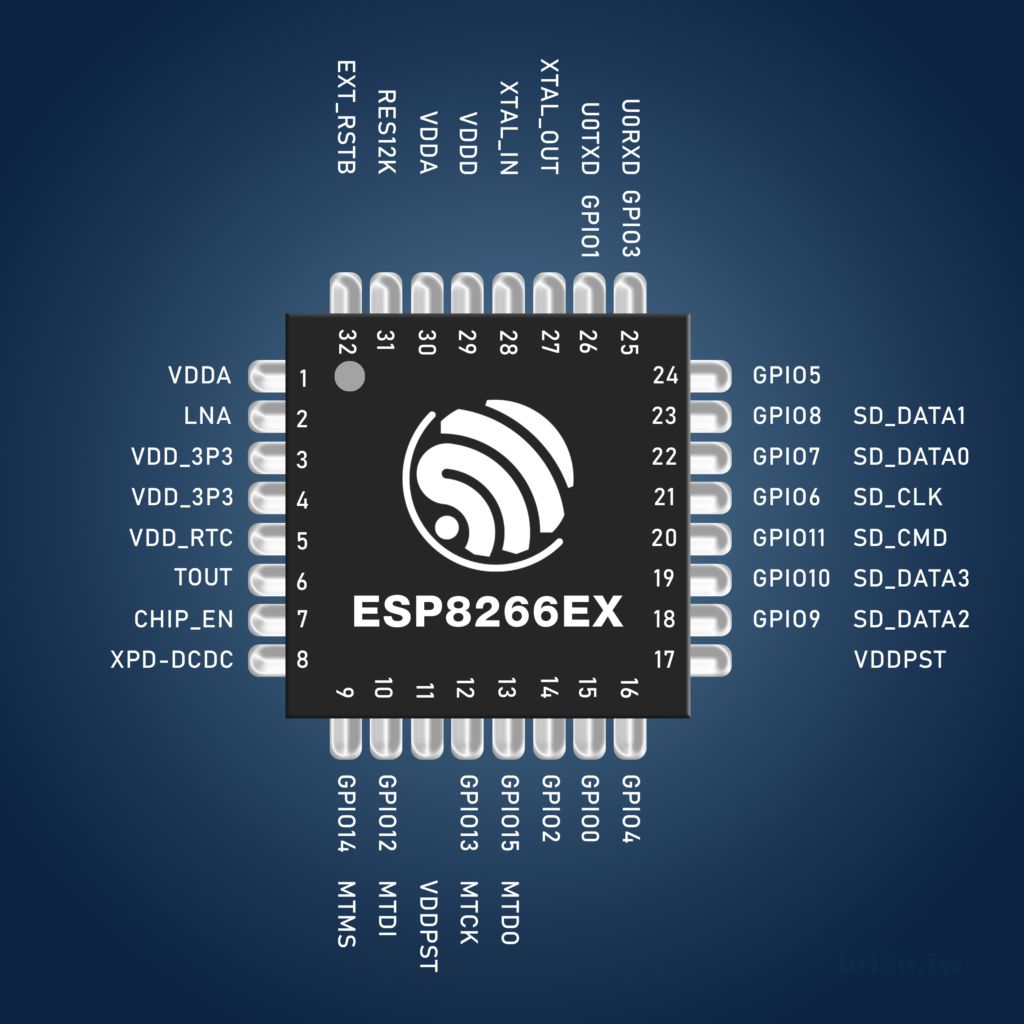
I also read ESP32 for to see if I can use it in my projects and I found that it’s powerful and versatile. It has fast dual-core processors and supports both Wi-Fi and Bluetooth, which makes it perfect for IoT applications. I also like how energy-efficient it is, with different power modes like deep-sleep and hibernation that help save battery life. It’s packed with features like GPIOs, ADCs, DACs, and multiple communication options like UART, SPI, and I2C, which make it super flexible for any project. Plus, its built-in security features like secure boot and flash encryption give me peace of mind about data safety. Compared to other microcontrollers, the ESP32 gives me the best combination of power, connectivity, flexibility, and affordability, which is why it’s my go-to choice for smart devices and IoT solutions.
here is the link which I use to read more about ESP32 https://www.espressif.com/sites/default/files/documentation/esp32_datasheet_en.pdf
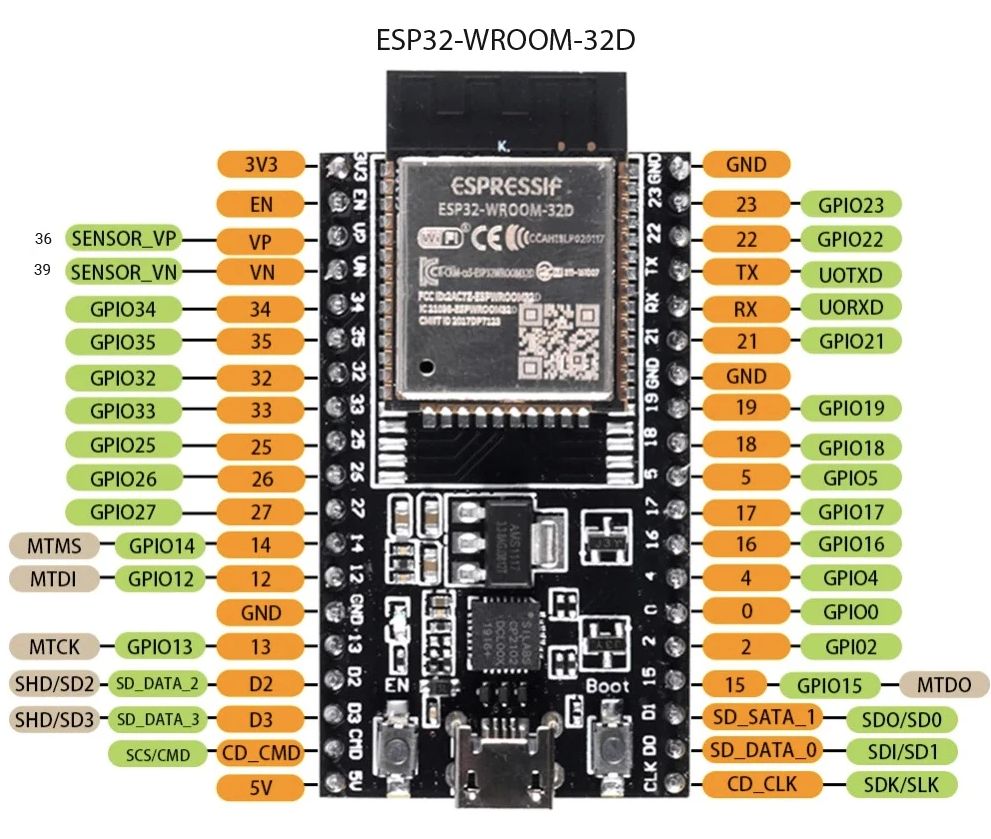
after I compared these two microcontrollers and I found that Between the ESP8266EX and ESP32, I prefer the ESP32 because it’s more powerful, versatile, and secure. It has dual-core processors, more memory, and supports both Wi-Fi and Bluetooth, making it faster and more flexible for complex IoT projects. It also offers better power efficiency with deep-sleep and hibernation modes, plus more GPIOs and peripherals like ADCs, DACs, and touch sensors. The ESP32’s advanced security features, like secure boot and flash encryption, make it more reliable for secure data handling. While the ESP8266EX is cheaper and simpler, the ESP32’s superior performance and features make it worth the extra cost for demanding projects.
how I made codes and simulation of my idea
after choosing the ESP32, I joined WOKWI web services to help me by accessing online tools to use while simulating my project through the link https://wokwi.com/ and after I selected ESP32 microcontroller to help me simulating my project
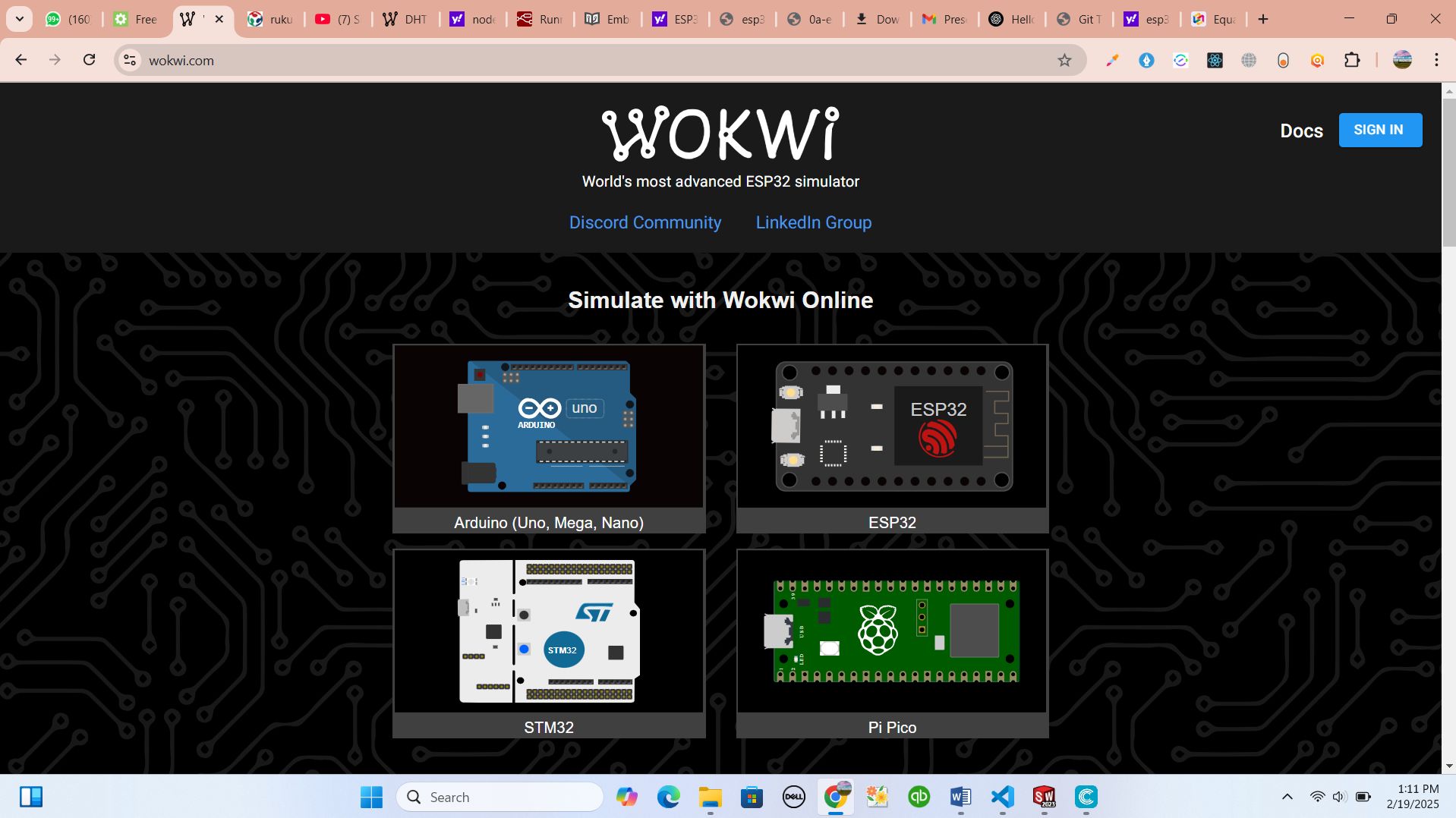
After joining the portal, I navigated through different templates and I picked the one which have DHT22 ESP32 to help me to measure the temperature and humidity
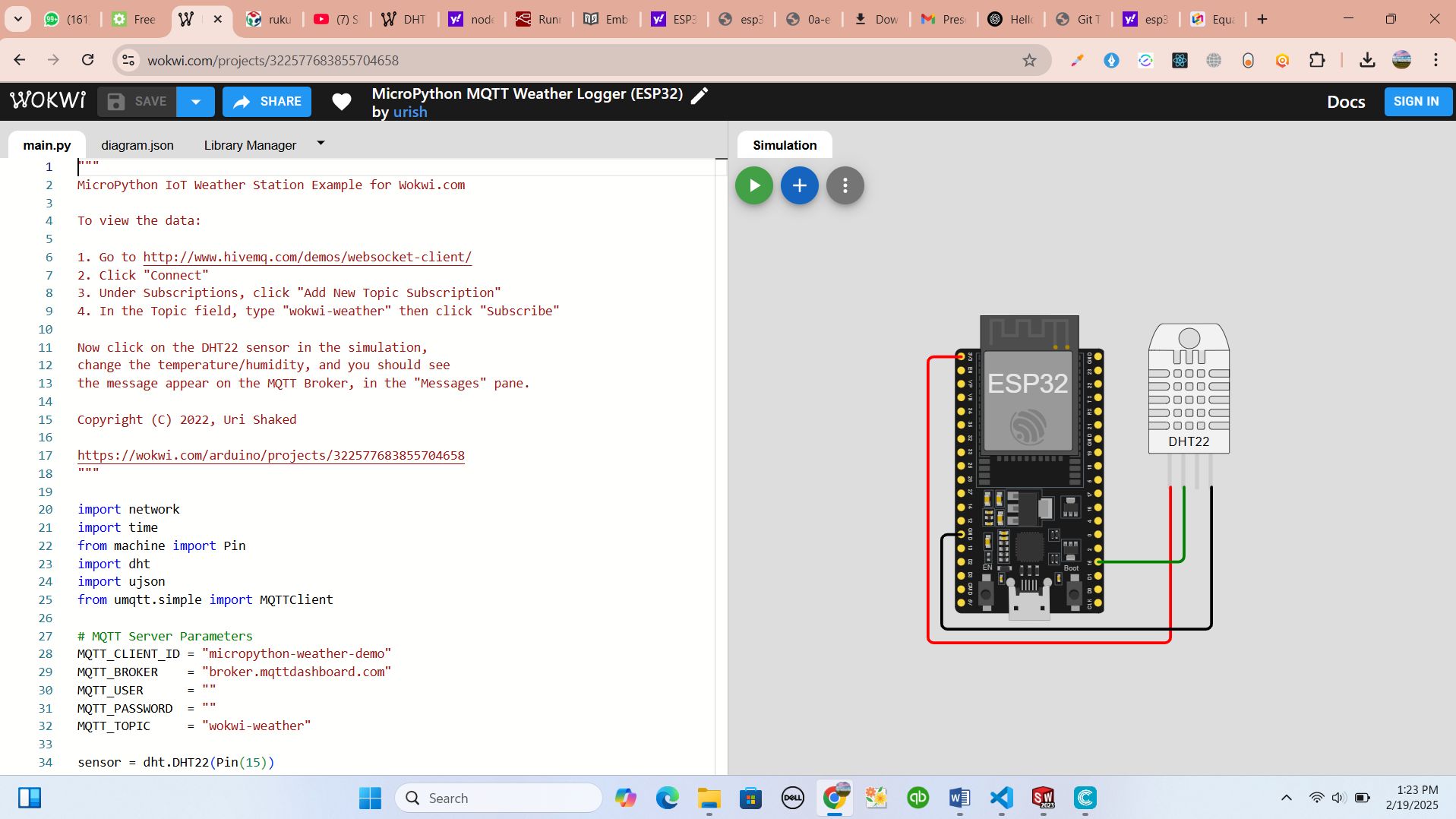
I eddited the codes by deleting the whole codes and I started from scratch by including first library for DHT22
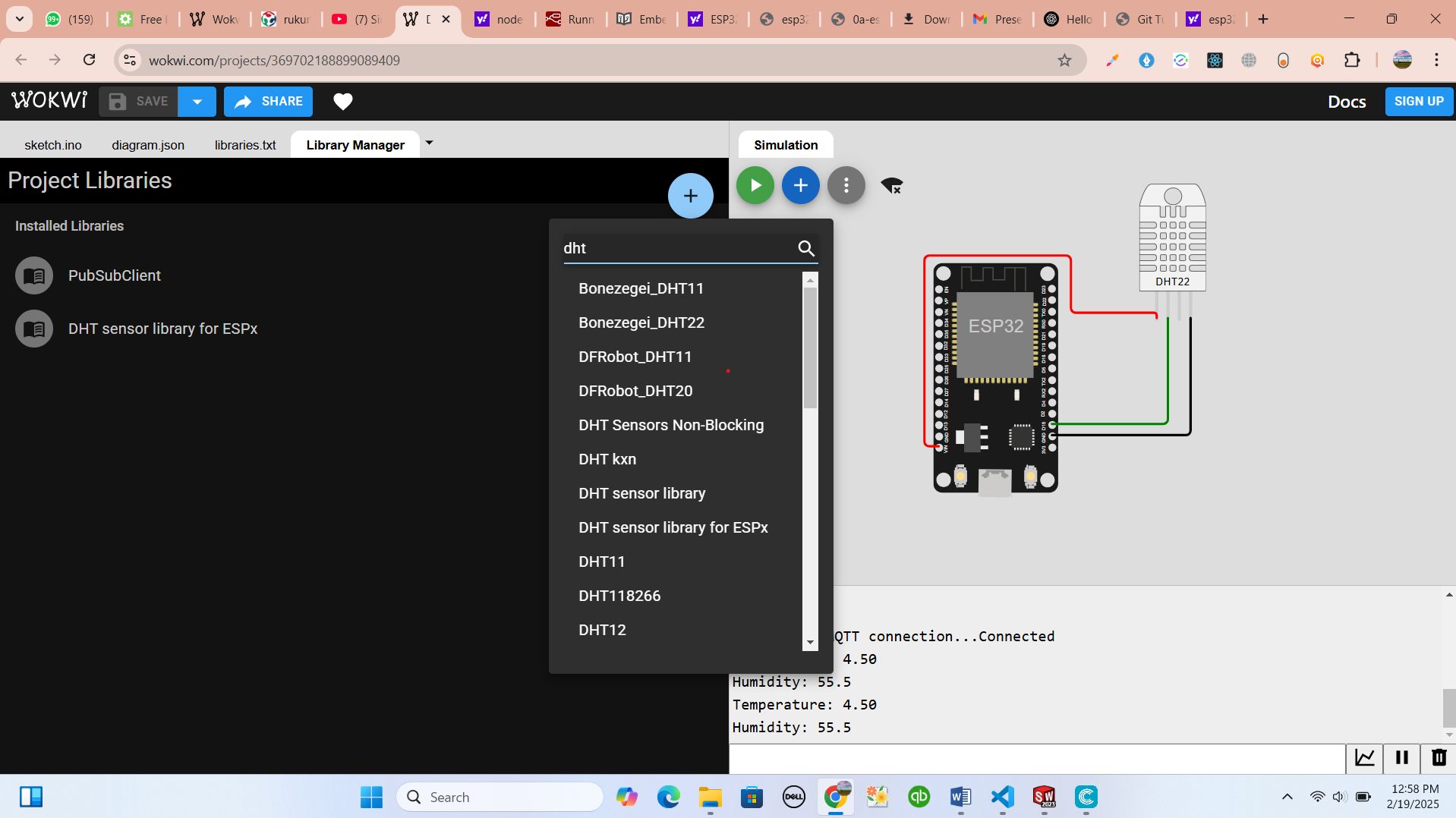
after I created txt file to make my library inclusive to my source codes
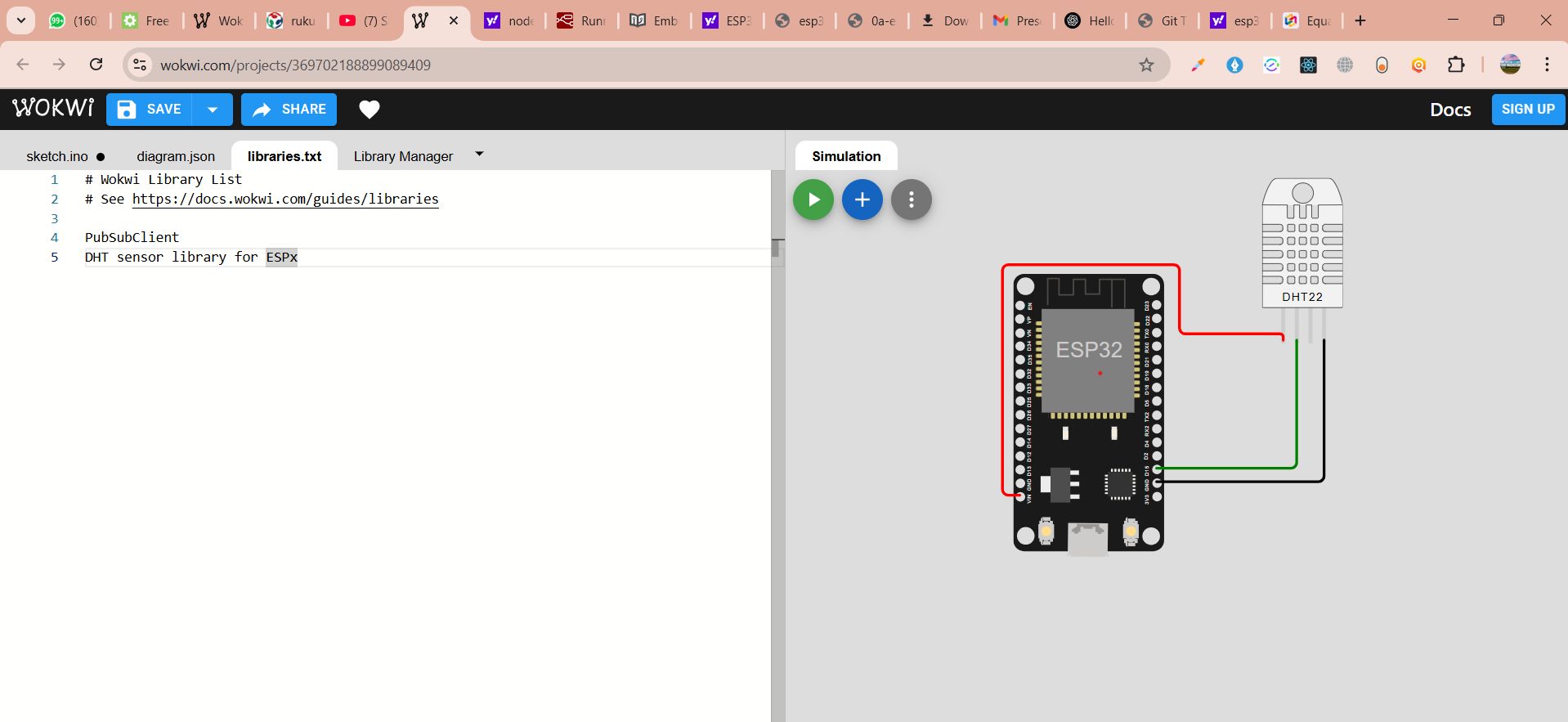
after that I simulated my project in wokwi
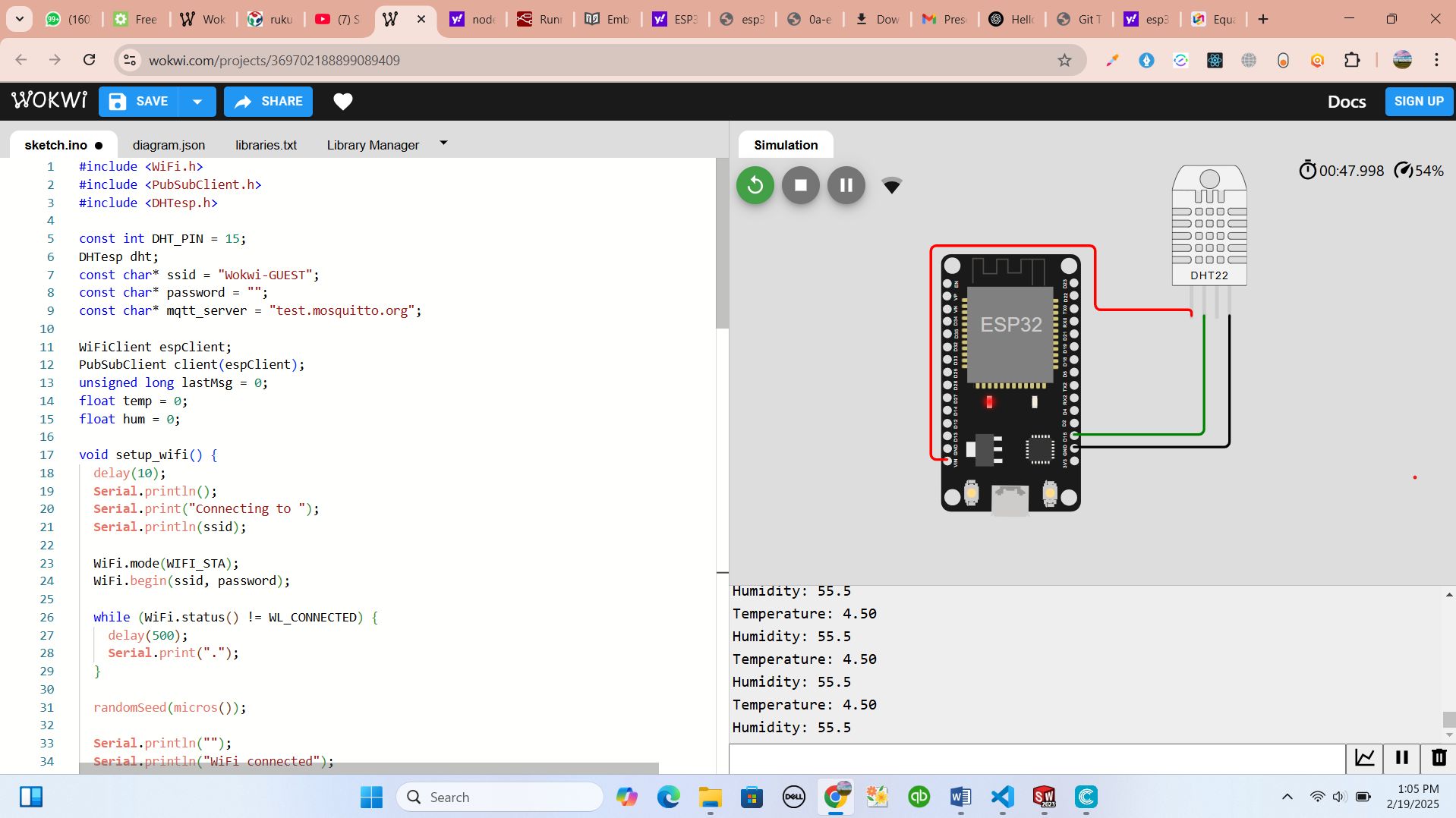
here are the code for the prooject
#include
#include
#include
const int DHT_PIN = 15;
DHTesp dht;
const char* ssid = "Wokwi-GUEST"; /// wifi ssid
const char* password = "";
const char* mqtt_server = "test.mosquitto.org";// mosquitto server url
WiFiClient espClient;
PubSubClient client(espClient);
unsigned long lastMsg = 0;
float temp = 0;
float hum = 0;
void setup_wifi() {
delay(10);
Serial.println();
Serial.print("Connecting to ");
Serial.println(ssid);
WiFi.mode(WIFI_STA);
WiFi.begin(ssid, password);
while (WiFi.status() != WL_CONNECTED) {
delay(500);
Serial.print(".");
}
randomSeed(micros());
Serial.println("");
Serial.println("WiFi connected");
Serial.println("IP address: ");
Serial.println(WiFi.localIP());
}
void callback(char* topic, byte* payload, unsigned int length) {
Serial.print("Message arrived [");
Serial.print(topic);
Serial.print("] ");
for (int i = 0; i < length; i++) {
Serial.print((char)payload[i]);
}}
void reconnect() {
while (!client.connected()) {
Serial.print("Attempting MQTT connection...");
String clientId = "ESP32Client-";
clientId += String(random(0xffff), HEX);
if (client.connect(clientId.c_str())) {
Serial.println("Connected");
client.publish("/ThinkIOT/Publish", "Welcome");
client.subscribe("/ThinkIOT/Subscribe");
} else {
Serial.print("failed, rc=");
Serial.print(client.state());
Serial.println(" try again in 5 seconds");
delay(5000);
}}
}
void setup() {
pinMode(2, OUTPUT);
Serial.begin(115200);
setup_wifi();
client.setServer(mqtt_server, 1883);
client.setCallback(callback);
dht.setup(DHT_PIN, DHTesp::DHT22);
}
void loop() {
if (!client.connected()) {
reconnect();
}
client.loop();
unsigned long now = millis();
if (now - lastMsg > 2000) { //perintah publish data
lastMsg = now;
TempAndHumidity data = dht.getTempAndHumidity();
String temp = String(data.temperature, 2);
client.publish("/Thinkitive/temp", temp.c_str()); // publish temp topic /ThinkIOT/temp
String hum = String(data.humidity, 1);
client.publish("/Thinkitive/hum", hum.c_str()); // publish hum topic /ThinkIOT/hum
Serial.print("Temperature: ");
Serial.println(temp);
Serial.print("Humidity: ");
Serial.println(hum);
}
}